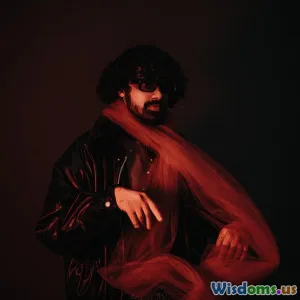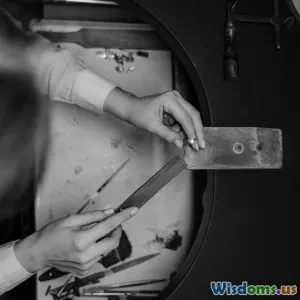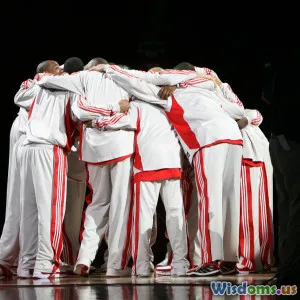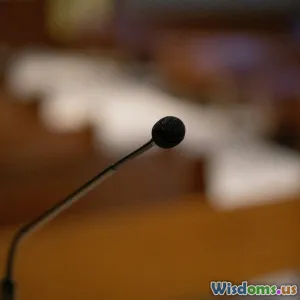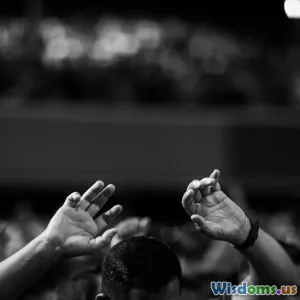
Creating Emotional Connections through Magic
8 min read Discover how magicians create deep emotional bonds by blending wonder, storytelling, and human connection on stage. (0 Reviews)
Creating Emotional Connections through Magic
Magic has fascinated humanity for centuries, captivating minds with illusions and the seemingly impossible. Yet, beyond sleight of hand and dazzling effects lies a deeper art: the power to create genuine emotional connections with an audience. This connection transforms magic from transient amazement into a profound experience, leaving lasting memories long after the curtains close.
In this article, we will explore the intricate ways magicians forge emotional bonds, the psychological mechanisms at play, and how storytelling, empathy, and performance craft combine to make magic truly magical.
The Magic Beyond Illusion: Why Emotional Connection Matters
At its core, magic is about mystery and wonder. But the most memorable magic performances are those that go beyond tricks and tap into audience feelings — their surprise, joy, nostalgia, or even vulnerability.
Renowned magician Teller, of Penn & Teller, often emphasizes how magic is a form of emotional storytelling. A trick without emotional resonance risks being a mere puzzle; when infused with emotional depth, it becomes transformative.
A 2019 survey by the Magic Circle revealed that 72% of audiences felt emotionally “moved” during live magic performances, citing feelings ranging from childlike joy to awe and empathy. This highlights that magic is no longer just spectacle but a shared human experience.
Crafting Emotional Connection: Key Techniques in Magic
1. Storytelling as a Bridge
One of the strongest tools magicians use is narrative. Stories create context, making magic relatable. For example, when Dynamo recounts his personal struggles onstage before performing a levitation, the trick resonates on a much deeper level; it’s no longer just an impossible illusion but a symbol of overcoming adversity.
Storytelling also allows spectators to invest emotionally, turning abstract tricks into meaningful moments. An iconic classic is Harry Houdini’s escape acts, made compelling through stories of imprisonment, survival, and human resilience.
2. Empathy and Audience Rapport
Building empathy is pivotal. Magicians often engage direct eye contact, intimate speech patterns, or humorous banter to lower emotional barriers. David Blaine’s street magic excels here—his calm, focused style draws audiences close, inviting them into the magic rather than distancing them.
John Turner, a performance psychologist, notes: “When audiences feel the magician’s vulnerability or authenticity, it triggers mirror neurons, elevating emotional connection.” Genuine interaction, such as acknowledging volunteers or reacting vulnerably to a failed trick, breaks the illusion but enhances connection.
3. Using Surprise to Evoke Emotion
Surprise is a core driver of emotional engagement. Our brains release dopamine when expectations are exceeded, leading to pleasure and heightened attention. The sudden reveal in tricks—like the unexpected appearance of a dove or vanishing of an object—elicits joy and wonder that bind the moments emotionally.
Well-designed misdirection amplifies surprise, controlling attention so performers can orchestrate peak emotional moments.
4. Sensory and Environmental Immersion
Setting plays a crucial role too. Skilled magicians manipulate lighting, sound, and stage aura to immerse audiences, making emotions more palpable. The suspenseful music rises, dim lighting casts shadows, and anticipation grows—like in Siegfried & Roy’s iconic tiger shows, where theatricality amplifies emotional impact.
Recent advances use technology—augmented reality, special effects—to heighten sensory engagement, further plunging audiences into an emotive experience.
Case Studies: Magic Shows that Connect Emotionally
David Copperfield’s Narrative Journeys
Copperfield doesn’t just perform illusions; he crafts stories that speak to dreams, wonder, and loss. His disappearance of the Statue of Liberty isn’t merely a stunt; it symbolizes possibility itself, inspiring audiences worldwide.
His televised specials often emphasize personal narratives, allowing viewers to connect emotionally from their living rooms.
Derren Brown’s Psychological Magic
Brown blends suggestion, psychology, and magic to create compelling experiences that preoccupy viewers’ minds. His shows explore human susceptibility and belief, triggering profound reflection and emotional engagement.
The Magic of Cirque du Soleil
While not traditional magic, Cirque du Soleil incorporates magical illusions woven into theatrical storytelling. Their ability to weave emotion into physical storytelling enhances audience empathy and communal emotional experience.
Psychological Underpinnings: Why Magic Connects Emotionally
Cognitive science explains several factors at work:
- The Suspension of Disbelief: Audiences willingly suspend logic, enabling emotional investment.
- Pattern Recognition: Magic breaks patterns, creating surprise linked to emotional arousal.
- Social Bonding: Shared experiences foster group cohesion and connection.
Neuroscientific studies using fMRI scans show that witnessing magic activates brain areas linked to reward and social cognition, explaining why emotions intensify during performances.
Practical Tips for Aspiring Magicians to Foster Emotional Connections
- Develop a Compelling Narrative: Connect your tricks within stories relatable to your audience.
- Engage with Authenticity: Show genuine emotion and vulnerability.
- Involve Your Audience: Use volunteers or interactive elements to deepen connection.
- Master Timing and Pacing: Build suspense and surprise deliberately.
- Harness Sensory Elements: Use sound, lighting, and staging to heighten emotion.
- Reflect on Feedback: Adjust your performance based on audience reactions.
Conclusion: The Heartbeat of Magic Is Emotional Connection
Magic’s true power is not just to amaze but to move. When magicians harness storytelling, empathy, surprise, and sensory immersion, they craft unforgettable emotional journeys. These connections transform audiences from passive witnesses into engaged participants, sharing a fleeting moment of wonder and human connection.
As famed magician Joshua Jay expresses: “A great trick may amaze once, but an emotional connection keeps the magic alive forever.”
For performers and spectators alike, embracing the emotional core of magic enriches the experience, inspiring awe and connection that echo beyond the final curtain.
Embrace magic not just as illusion, but as a powerful bridge connecting hearts and minds across time.
Rate the Post
User Reviews
Popular Posts










